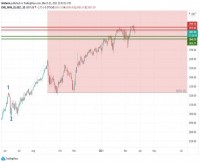|
By: Bailey McCann, Private Equity Strategies The conversation around private equity and private equity transactions often centers on figures in the tens, if not hundreds of millions. Reading the wires a transaction of $5 million – a notable sum to many – is unlikely to draw much interest from GPs or LPs. Yet, in many parts of the world a $100 transaction can be life changing, and these tiny sums are catching the eye of private equity. Nonbank lending, peer-to-peer loans, and even crowdfunding organizations are getting more media coverage as small to medium sized businesses and startups get more creative in their hunt for capital. Institutions are flocking to firms like Lending Club and others to get in on the small loan land rush. Yet, in emerging and frontier markets, an older story – microfinance - is growing, providing a way out of poverty for both men and women. Emerging markets are forecasted to provide almost half of the macroeconomic growth worldwide over the next year, and in many cases that growth is directly tied to microfinance loans. As a group, microfinance lenders have been expanding, but until recently were largely off the radar of firms in the developed markets. A few private equity funds have been involved in microfinance for many years, but others, already familiar with specialty finance and lending are starting to take a look as microfinance loan books continue to grow. According to the Microfinance Institutions Network (MFIN), in India, microfinance loan books in that country grew 54% over the last year. The industry itself is also getting greater attention from regulators as they move to crack down on loan-sharking and register legitimate operations. The Bank of Ghana (BoG) created a new unit within the central bank to focus specifically on regulating and registering these organizations; so far almost 300 microlenders have been registered. “Microfinance is already a commercial success,” Mary Ellen Iskenderian, President and CEO of Women’s World Banking tells Private Equity Strategies. “Focus groups tell us that in emerging and developing economies having a bank account is deeply personal – it is aspirational. But, financial services firms have to be vigilant with the trust people place in those institutions.” Women have been foundational in the development of the microfinance industry. Early microfinance lenders focused on reaching out to low-income women, helping them to grow small businesses and move up the income ladder. As the industry has grown, microloans are going out to men and women, as well as small but established businesses. Women’s World Banking still focuses on building products that will reach low-income women and ensure that lenders lend to a more diverse group. “As microfinance became more successful, the percentage of women barrowers has gone down. We’ve seen that as lenders partner with commercial venders, fewer loans are being made to women. Women tend to take smaller loans, and men tend to take bigger loans, which are more profitable. But, portfolio quality goes down as lenders move away from women,” Iskenderian says. This push-pull between commercial lenders and microfinance organizations can also be an opportunity for private capital. WestBridge Ventures II just increased its stake in Indian-microlender SKS, buying out Sequoia Capital’s interest. SKS Microfinance is India’s only listed microlender, but other funding rounds for private microlenders in the country have also been successful. Women’s World Banking recently partnered with Nigeria’s Diamond Bank to offer microfinance products in addition to their traditional retail banking offerings. “When we partnered with Diamond Bank, one of the largest open markets in Nigeria was literally operating every day right outside the front door of the bank, but many of those people couldn’t get an account there,” Iskenderian explains. Through the partnership, microbarrowers can start savings accounts with the bank and obtain loans, building a history that will help them move up the income ladder and into more traditional banking products at Diamond as their income grows. “We are starting to see some interest from European banks in these countries,” she says. “It’s starting to make sense as the assets grow but affordability is still critical. We never pitch a product to banks that we think they can’t afford, but the upfront cost for microfinance is often high. So there is a partnership need for philanthropic and private capital, in addition to what the banks can do. Still, banks that want to be involved in emerging markets understand the value.” Investors are getting in on the other side backing organizations like Women’s World Banking which has its own fund and an investor base that includes family offices, high net worth individuals and institutions. From the investor side, finding a fully registered and regulated organization that is profitable in emerging markets cuts out a lot of the guesswork and risk more common to those markets.
| |
|
This article was published in Opalesque's Private Equity Strategies our monthly research update on the global private equity landscape including all sectors and market caps.
|
Private Equity Strategies
As Microfinance Grows, Private Equity Sees Emerging Markets Play |
|





 RSS
RSS










